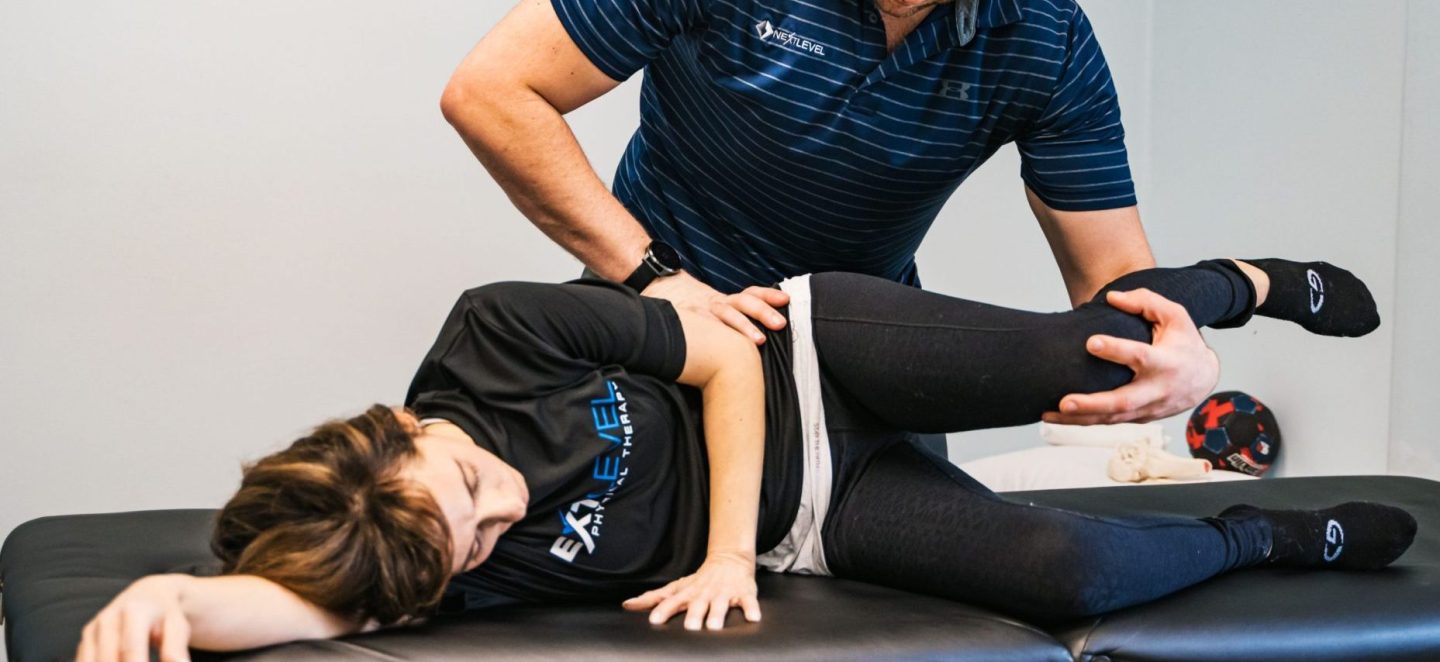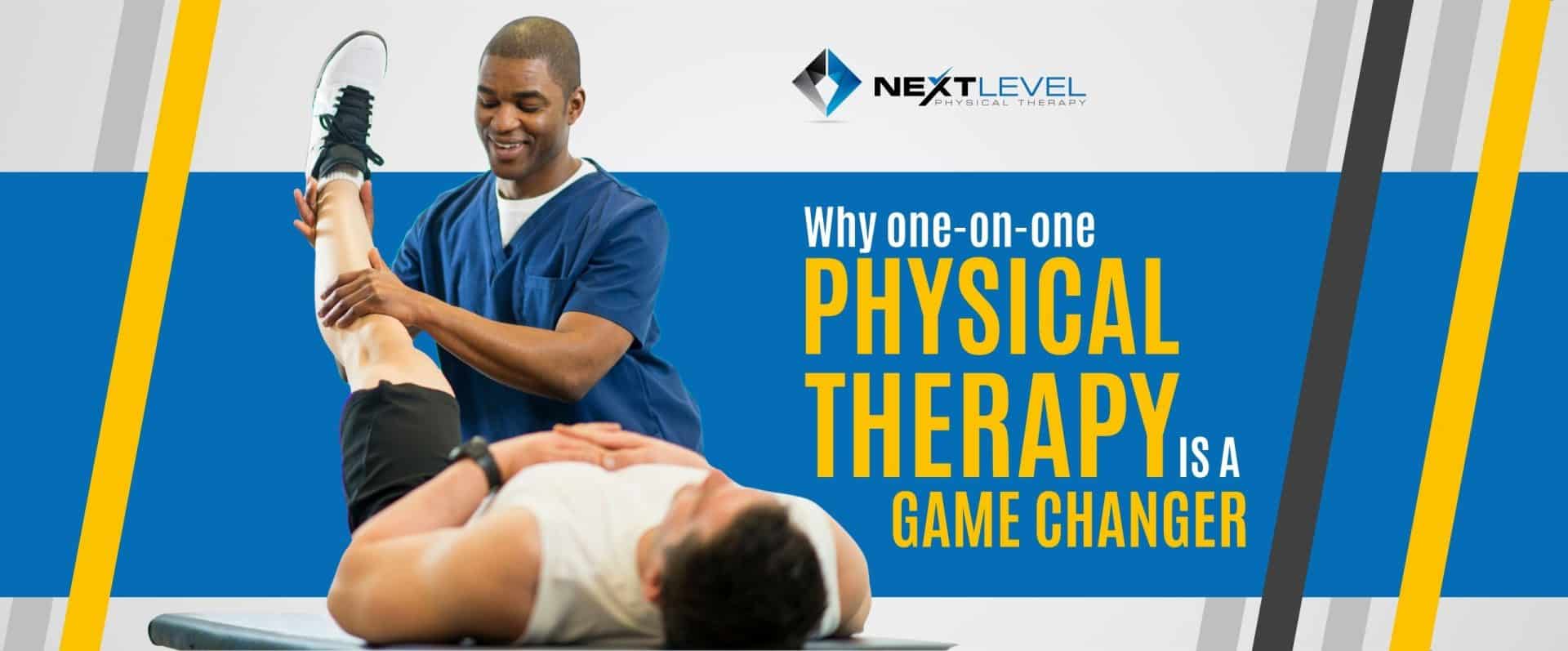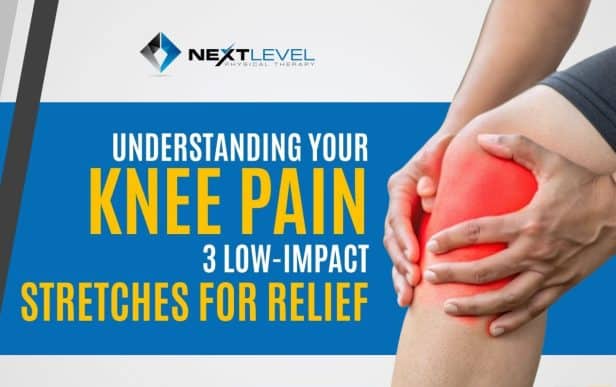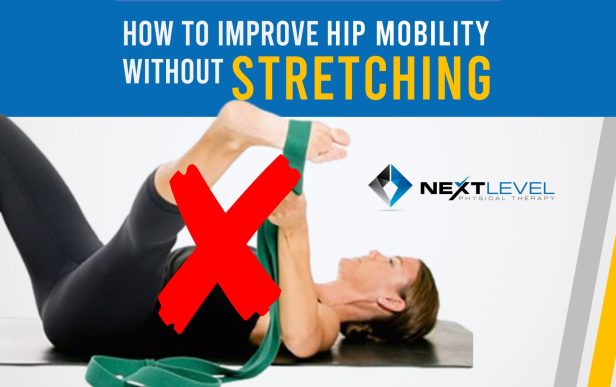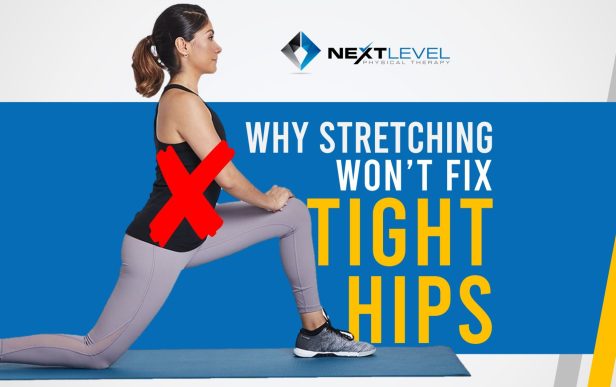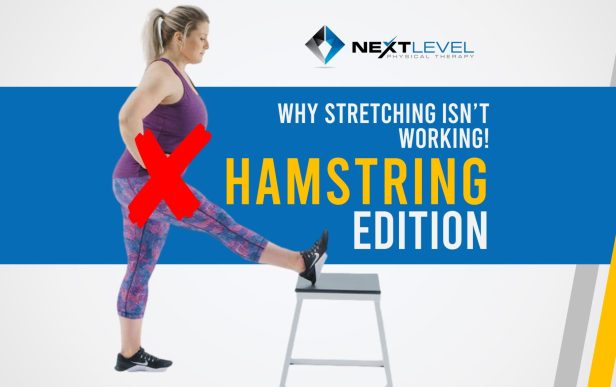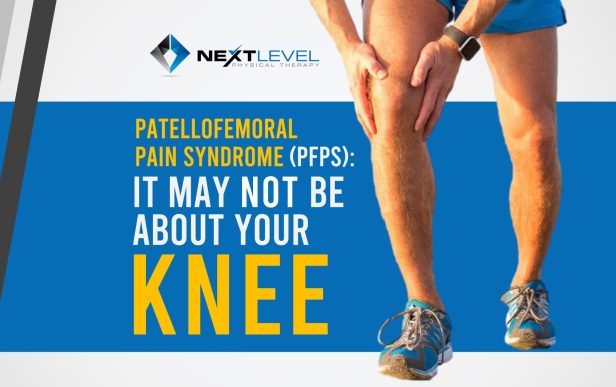Understanding Your Knee Pain: 3 Low-Impact Stretches for Relief
Let’s Talk Knee Pain!
So, you’ve been dealing with knee pain for a while? The first step to recovery is understanding what is causing the pain in the first place.
Knee pain is a common complaint that affects people of all ages and activity levels. Knee pain affects approximately 25% of adults and causing millions of primary care visits annually. It can stem from injuries, mechanical problems, or other underlying chronic conditions. Some people experience pain behind the knee, while others feel discomfort on the inner side of the knee. But no matter the source, knee pain can be extremely frustrating and hold you back from performing even the simplest everyday activities. Understanding the causes and treatment options is key to keeping your knees strong and pain-free.
Types of Knee Pain
Pain behind the knee can be a result of issues like a Baker’s cyst, hamstring injuries, or even a blood clot known as deep vein thrombosis. This type of pain can make it difficult to fully straighten your leg or put weight on it.
On the other hand, pain on the inner side of the knee is frequently caused by medial meniscus tears, MCL injuries, or osteoarthritis. Individuals with this pain often feel discomfort when climbing stairs, squatting, or after prolonged sitting.
For some, knee pain is more generalized, meaning it could be due to overuse, improper joint alignment, or underlying conditions like arthritis. Identifying the type of knee pain you experience is the first step toward effective treatment.
So ask yourself specific questions about your knee pain:
Does it hurt to stand up and sit down?
Does it hurt to walk, jog, or run?
Are you doing repetitive movements like squats or lunges with improper form?
Understand what triggers the pain, and you’ll be on the path to figuring out what the root cause of the pain actually is.
What Are Some Common Knee Injuries?
Knee injuries can range from minor sprains to severe ligament damage that may require surgery. These injuries often result from sports, accidents, or even everyday movements that put prolonged stress on the knee joint.
Ligament Injuries
The knee is supported by four major ligaments:
Anterior Cruciate Ligament (ACL): In the center of the knee, the ACL prevents excessive forward movement of the shinbone and is commonly injured in sudden stops, twists, or impacts.
Medial Collateral Ligament (MCL): The MCL supports the inner knee and is often damaged by excessive force pushing the knee inward.
Posterior Cruciate Ligament (PCL): Also in the center of the knee, the PCL prevents the shinbone from moving too far backward.
Lateral Collateral Ligament (LCL): Located on the outer side of the knee, the LCL is less commonly injured but can be strained by excessive force pushing the knee outward.
Damage to any of these ligaments can cause significant pain and instability. The anterior cruciate ligament (ACL) is one of the most commonly injured, often torn due to sudden stops, twisting, or direct trauma. This injury is especially common in athletes who play sports like basketball, soccer, football, and BJJ. ACL injuries often require surgery for a full recovery.
Meniscus Tears
The meniscus is a piece of cartilage that cushions and stabilizes the knee joint. Acute meniscus tears are common among athletes and often occur during twisting movements. When torn, the knee may feel like it locks or catches during movement.
Degenerative meniscus tears occur over time due to wear and tear. Older adults are more prone to these injuries, often experiencing pain and stiffness that gradually worsens over time.
Tendon Injuries
The patellar tendon, which connects the kneecap to the shinbone, can become inflamed due to repetitive stress. This condition, known as patellar tendinitis or Jumper’s Knee, is often seen in athletes who perform frequent jumping movements.
Some More Insight on the Causes of Knee Pain
There are many reasons why knee pain may develop, ranging from direct injuries to chronic health conditions and mechanical problems in the body.
Injuries
Traumatic knee injuries, such as fractures, ligament tears, or dislocations, often occur from falls, accidents, or sports-related incidents. Overuse injuries are another common cause, developing gradually due to repetitive motion, such as running or jumping.
Chronic Conditions
Conditions like osteoarthritis, rheumatoid arthritis, and gout can contribute to chronic knee pain. Osteoarthritis is one of the most prevalent causes, wearing down the protective cartilage in the knee over time. Rheumatoid arthritis, an autoimmune disease, leads to inflammation and joint damage, while gout results from uric acid buildup in the knee joint, causing sudden and severe pain.
Mechanical Issues
Poor alignment, muscle weakness, and tightness can also contribute to knee pain. When muscles surrounding the knee, such as the quadriceps and hamstrings, are weak or tight, they place unnecessary stress on the joint. Similarly, improper foot posture, such as flat feet, can alter walking mechanics, increasing strain on the knees.
This is where proper physical therapy comes into play. Sometimes, the pain itself is not a direct indication of the root cause of the pain. Identifying an underlying mechanical issue in the knee could be the key to fixing the issue itself (and prevent further injury while avoiding surgery). The PT’s at Next Level Physical Therapy are trained to find these root causes and not only get you back to pain-free movement, but improve the quality of that movement going forward. Want to know more? Fill out this form and one of our Client Specialists will be in touch!
The Key to Knee Pain Management
While knee pain can be frustrating, various treatment methods can help relieve discomfort and promote healing. A combination of home remedies, physical therapy, and medical treatments is often the most effective approach.
Home Remedies
One of the simplest ways to manage knee pain is through rest and ice therapy. Resting the knee allows tissues to heal, while applying ice helps reduce swelling and inflammation. Using compression with a knee brace or bandage can provide additional support, while elevating the leg helps minimize swelling.
Apply ice packs for 15-20 minutes several times a day.
Use compression sleeves or braces for additional support.
Keep the leg elevated to reduce swelling.
Physical Therapy
Physical therapy plays a crucial role in knee pain recovery by strengthening the surrounding muscles, improving flexibility, and enhancing joint stability. Strengthening exercises focus on key muscle groups like the quadriceps, hamstrings, and glutes, which provide essential support for the knee.
Flexibility training, including gentle stretching, can relieve muscle tension and improve movement, while balance and stability drills help prevent future injuries. Working with a physical therapist ensures that exercises are performed correctly and tailored to individual needs.
3 Low-Impact Stretches for Knee Pain Relief
Stretching and exercise are the best ways to maintain knee health and reduce pain. By strengthening muscles and improving flexibility, you can reduce strain on the knee joint.
Strengthening Exercises
Strong muscles help absorb impact and support knee function. Quad sets, where you sit with your leg straight and tighten the thigh muscles, are great for engaging the quadriceps. Straight leg raises and step-ups also build leg strength while minimizing knee strain.
Stretching Exercises
Stretching is essential for maintaining flexibility and reducing tension. Here are a few to relieve knee pain:
Hamstring stretch: to relieve tightness behind the knee
Quadriceps stretch: improves front-thigh flexibility
Calf stretch: to help with lower leg tightness that affects knee function
Incorporating these stretches into a daily routine can improve movement and decrease stiffness.
Low-Impact Activities
For those looking for exercise alternatives that don’t place excessive stress on the knee, low-impact activities like swimming, cycling, and yoga are excellent options. Swimming provides resistance training without impact, cycling strengthens the legs while keeping the motion smooth, and yoga enhances flexibility and balance.
Time to Take Control of Your Knee Pain Recovery
Knee pain can interfere with daily life, but the right approach can help manage discomfort and restore mobility. Whether you’re dealing with pain behind the knee, pain on the inner side of the knee, or looking for knee pain exercises, taking proactive steps can improve knee health. By understanding the causes, recognizing symptoms early, and following a well-rounded treatment plan, you can maintain strong, pain-free knees for years to come.
Join our Facebook group to watch Dr. Saige talk more about knee pain!
FAQ
Does Next Level treat knee pain?
Yes! We treat all levels of knee pain from injury due to overuse to ACL post-op recovery. Let Next Level help you find the root cause of your pain so you can get back to your active and healthy lifestyle!
What Causes Knee Pain?
Knee pain can stem from a variety of factors, including injuries, chronic conditions, and mechanical issues. Injuries such as ligament tears, meniscus damage, and tendon inflammation are common causes, often resulting from sports, accidents, or overuse. Chronic conditions like osteoarthritis, rheumatoid arthritis, and gout can also lead to persistent knee pain by causing inflammation, cartilage breakdown, or joint damage. Additionally, mechanical problems such as poor posture, muscle imbalances, and improper movement patterns can contribute to knee discomfort over time. Understanding the root cause of knee pain is essential for effective treatment and long-term relief.
How Do You Treat Knee Pain?
Treating knee pain depends on the cause and severity of the discomfort. For minor pain, simple home remedies like rest, ice, compression, and elevation (RICE) can help reduce swelling and promote healing. Over-the-counter pain relievers, such as ibuprofen, can also provide temporary relief. If knee pain persists, physical therapy is often recommended to strengthen the surrounding muscles and improve joint stability. In cases of chronic knee pain caused by arthritis or long-term wear and tear, treatments like corticosteroid injections, bracing, or even lifestyle adjustments—such as weight management and low-impact exercises—can be effective. For severe injuries, including ligament tears or cartilage damage, surgical options like arthroscopic surgery or knee replacement may be necessary.
Read More
